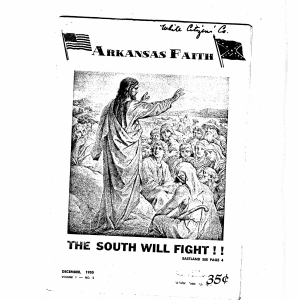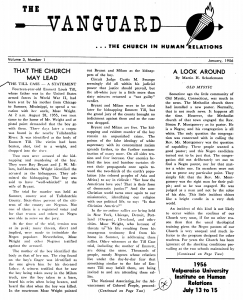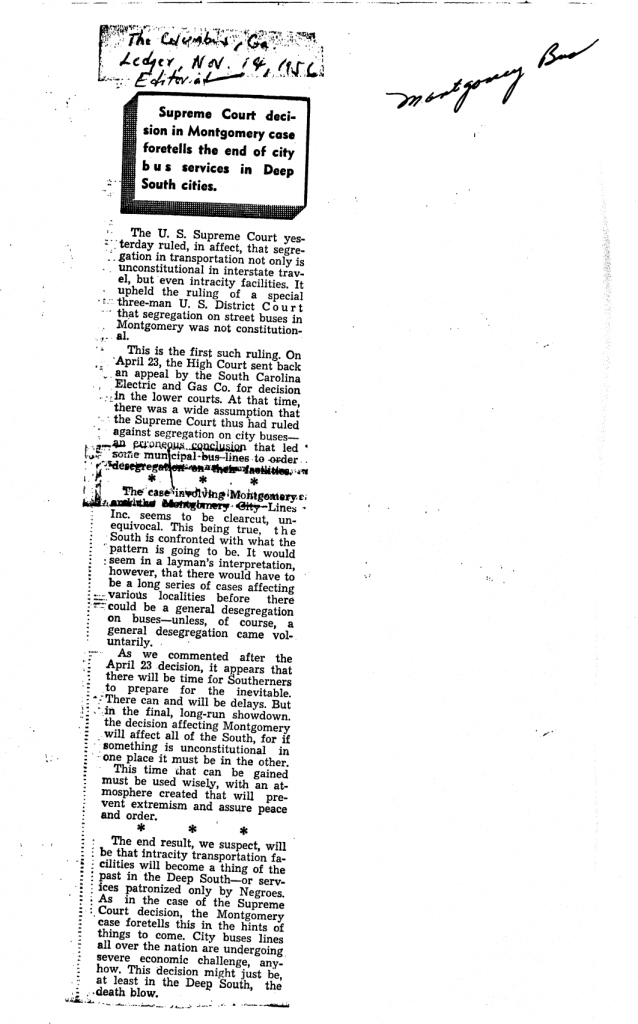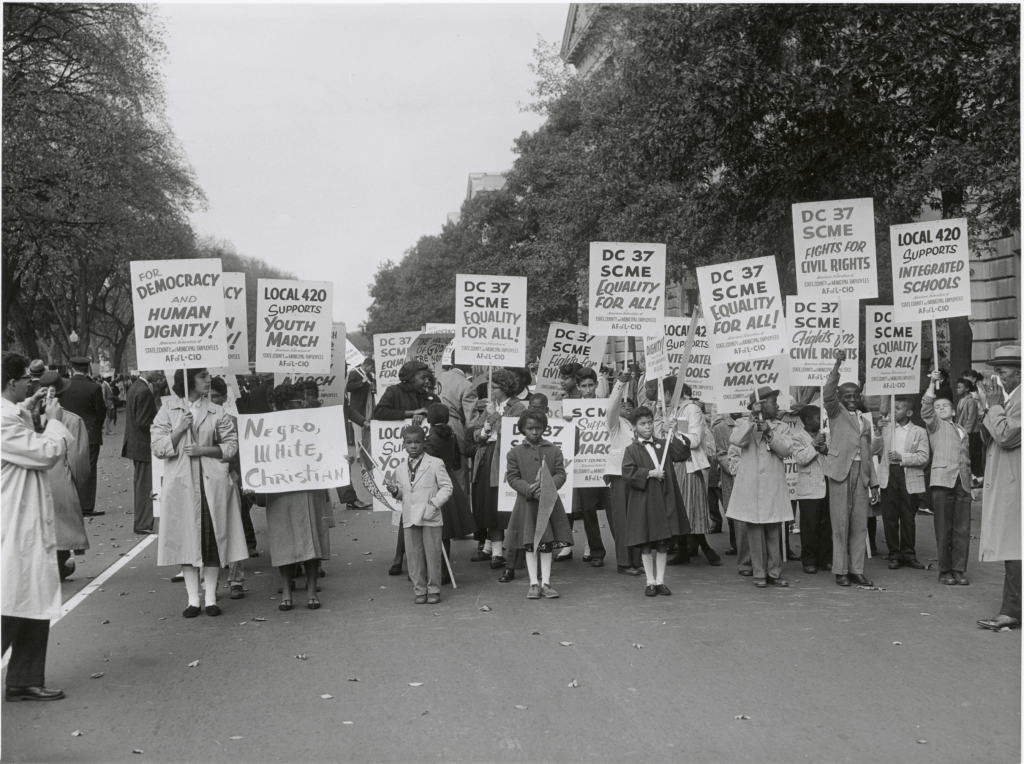Arkansas Faith: The South Will Fight!! – December 1955

A copy of the Arkansas Faith published in 1955 by the White Citizen’s Council
This source is the Arkansas Faith, a White Citizens Council newspaper stationed out of Arkansas thats mission is to publicize the white perspective on the Civil Rights Movement. This newspaper started in 1955, publishing white race idealisms and racial slanders against African Americans. Its intended audience is other white citizens of the United States who believe in upholding the traditional values of segregation and religion. In this edition of the paper in particular, the editors draw closely on school desegregation and letters to the editors, discriminating against black people and their lifestyles. This source connects to my exhibit because it shows the discrimination that African Americans faced during the Civil Rights movement. It also displays the aggression and supremacy mindset of white civilians towards other races.
The Vanguard Torch, Church in Human Relations: “That the Church May Lead” – January 1956

The article about the Murder of Emmett Till, written by the Lutheran Human Relations Association of America, Valparaiso University
This source is a newspaper edition from The Vanguard Torch, written by the Lutheran Human Relations Association of America, from Valparaiso University. This newspaper and organization’s message is to “create awareness to racial relations and social injustices.” Within this newspaper’s edition written in 1955, the editor discusses the murder of Emmett Till. The newspaper describes the case about the African American’s death, and advocate for justice. They go against the popular opinion of the public and they advocate that justice be given to Till and his family. The murders, two white men, should be punished for the crime they committed. The article also argues about the poisoned white supremacist society and how its reached its breaking point. I find this source relevant to my exhibit because the Emmett Till murder was a major case in the Civil Rights Movement. Many African Americans saw it as a turning point in the protests and the last injustice they could handle. This case pushed black people to advocate even stronger than before.
The Ledger: “Supreme Court Decision in Montgomery foretells the end of city bus services in Deep South cities” – November 1956

Article from The Ledger newspaper in Columbus, Georgia, stating that the Supreme Court ruled to end bus segregation.
This source is a newspaper article from The Ledger, a newspaper in Columbus, Georgia. In this article, they discuss the Supreme Court’s decision in desegregating the buses across the nation. The intended audience for this source is the general public, to inform them on the news of the decision. The article goes into detail about the effects it will have on the nation, and on the South in particular. It demonstrates how the public will react and the ideas behind the desegregation. I found this source relevant to my exhibit because it shows the change slowly starting to occur throughout the nation. The African Americans received a small victory and a small part of their rights through this court decision. It boosted the energy of the campaign and allowed for the activists to go after the bigger rights that African Americans deserve.
Youth March for Integrated Schools: Washington D.C. – 1958

Photograph from Washington D.C. Youth March for Integrated Schools. Pictured are both children and adults peacefully protesting segregation in education.
This source is a photograph taken from the Youth March for Integrated Schools in Washington D.C. in 1958. In this photograph, there are African American children and some adults holding signs for the protest. A lot of the signs advocate for integrated schools with sayings such as “Equality for All!” and “Local 420 supports integrated schools!” The intended audience of this source is the general public, to inform them on the protest that occurred at the time. I found this source interesting to add to my exhibit because of the children’s perspective. I feel that showing the youth being involved in the Civil Rights movement as well, allows for people to understand the depth of the movement more. It shows that the children felt discriminated against, and they deserve an education and rights just like everyone else.
